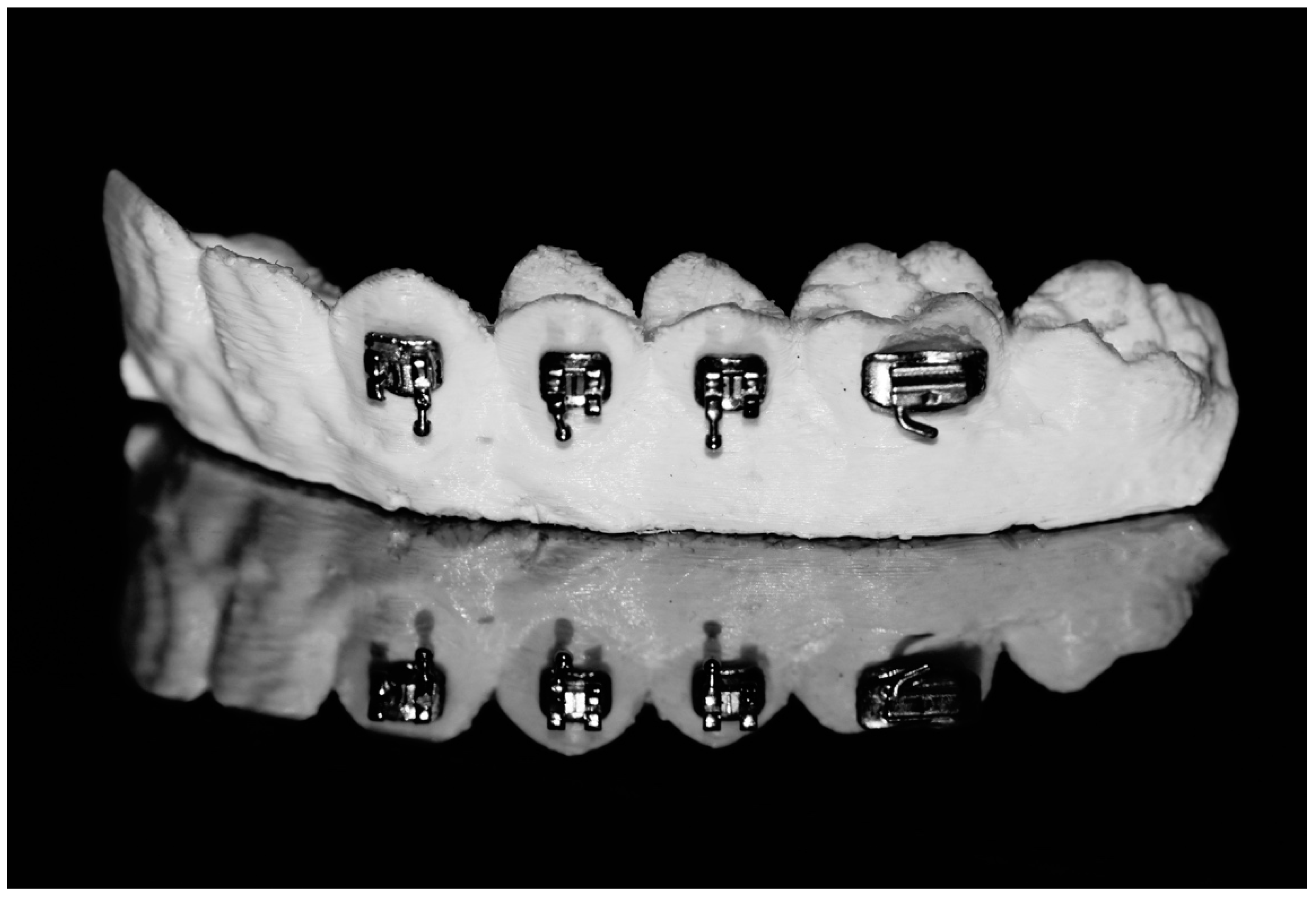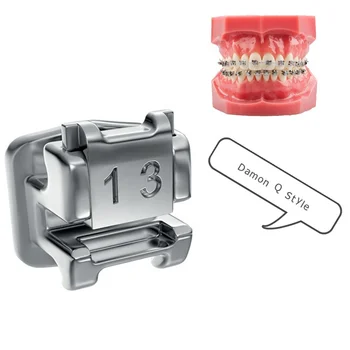The Damon system of orthodontics is one of many fixed, passive, self-ligating methods of correcting malocclusions. Passive self-ligating systems use brackets that do not require elastic o-rings to hold the wires in place. By not using the elastic o-rings, it is said that the wires freely slide through the slots without friction. However, this may not be correct as it allows more rotation or tipping of teeth (and therefore some potential loss of precision of movement) before the bracket edges contact the wire, resulting in friction. It is believed that not using o-rings results in better oral hygiene but the research is equivocal, with findings both for and against the theory. To hold the wires in place, the Damon System uses small sliding doors. The addition of 'stops' on the wires helps prevent the wire from becoming displaced from its intended location.

Damon Q’s profile and occlusal-gingival dimensions are much smaller compared with other self-ligation brackets. OPENING BRECKETS Insert the opening instrument (866-4016) into the cracks and turn it to 90o.
Procedure[edit]

Damon Q Bracket Slot Sizes
- Certified Damon System doctors combine three key components, which when used together, deliver faster treatment, fewer appointments, greater comfort, and consistent high-quality results: Damon passive self-ligating braces that eliminate the need for elastic or metal 'ties'. With Damon tie-less braces you can experience treatment without tightening.
- Size and the divergence of slot walls cause an increase of wire-slot play, inducing a loss of torque control. Practitioners cannot fully trust the precision of used appli-ances and should be aware that adjustments could be needed in the finishing stages of the treatment. KEYWORDS bracket, bracket slot tolerance, slot geometry, slot size.
In passive self-ligating braces, orthodontic treatment begins with very light wires .014 inch in size that are made of an alloy of copper, nickel, and titanium (CuNiTi) and have a non-anatomical shape because it is wider than the natural arch. Successively thicker wires are placed as the arches round out and as the teeth level. The next-larger wire is used when it may be passively placed in the brackets. The use of initial light wires and the passive placement of subsequent heavier wires made of stainless steel and/or a TMA alloy may reduce the pressure exerted on the periodontal ligaments. This may compromise the blood flow and trigger a nonphysiologic osteoclastic/osteoblastic activity. However, there is no evidence to support this claim of less force.
Damon Q Bracket Slot Size Chart
Tooth movement has been claimed to occur more rapidly and more comfortably by many doctors using passive self-ligating braces. However numerous randomised clinical trials (RCT's) (e.g.[1]), have been conducted on these brackets and the summary systematic reviews of these have found no difference in the rate of tooth movement or overall treatment time between conventional brackets and Damon brackets,.[2][3]
References[edit]
- ^Songra, Goldie; Clover, Matthew; Atack, Nikki E.; Ewings, Paul; Sherriff, Martyn; Sandy, Jonathan R.; Ireland, Anthony J. (2014). 'Comparative assessment of alignment efficiency and space closure of active and passive self-ligating vs conventional appliances in adolescents: A single-center randomized controlled trial'. American Journal of Orthodontics and Dentofacial Orthopedics. 145 (5): 569–78. doi:10.1016/j.ajodo.2013.12.024. PMID24785921.
- ^Chen, Stephanie Shih-Hsuan; Greenlee, Geoffrey Michael; Kim, Jihyun-Elizabeth; Smith, Craig L.; Huang, Greg J. (2010). 'Systematic review of self-ligating brackets'. American Journal of Orthodontics and Dentofacial Orthopedics. 137 (6): 726.e1–726.e18, discussion 726–7. doi:10.1016/j.ajodo.2009.11.009. PMID20685517.
- ^Pandis, Nikolaos; Fleming, Padhraig S.; Spineli, Loukia M.; Salanti, Georgia (2014). 'Initial orthodontic alignment effectiveness with self-ligating and conventional appliances: A network meta-analysis in practice'. American Journal of Orthodontics and Dentofacial Orthopedics. 145 (4): S152–63. doi:10.1016/j.ajodo.2013.12.016. PMID24680024.